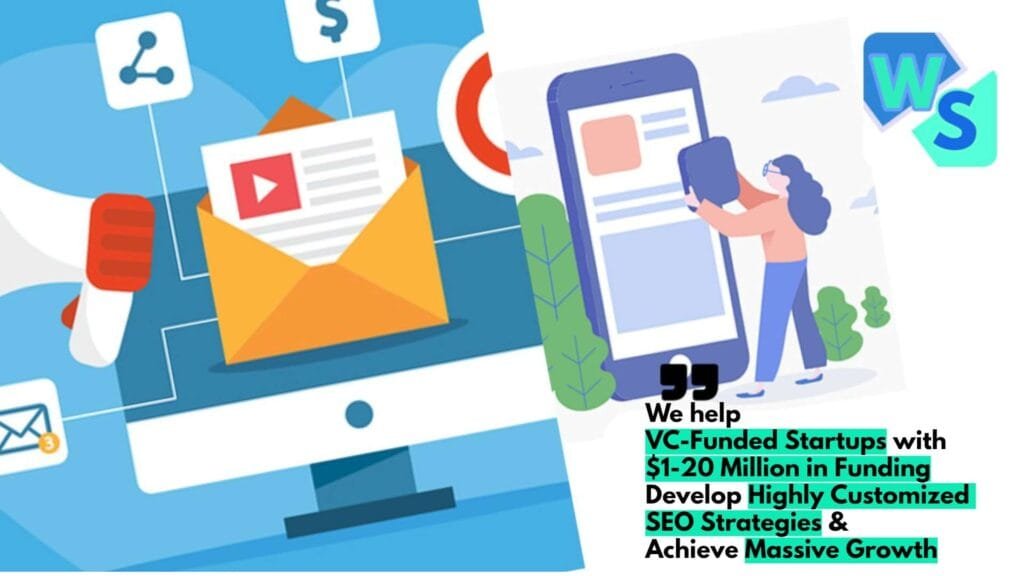Social media has evolved from a digital hangout space to a powerful marketing tool. Today, it’s not just about posting updates and gathering followers; it’s also about listening. “Social Media Listening” may sound like a buzz term, but it’s crucial for gaining key insights into your leads. This deep dive will guide you through the hows and whys, backed by case studies, best practices, and actionable strategies.
What Is Social Media Listening and Why Should You Care?
The Concept Unveiled
Social Media Listening goes beyond monitoring mentions of your brand or products. It’s an umbrella term that includes tracking conversations around specific phrases, words, or brands, and then leveraging those insights to discover opportunities or create content for your audience.
Why It Matters
Imagine walking into a room where people are talking about your brand, your industry, and even your competitors. Wouldn’t you want to know what they’re saying? That room is social media, and the conversations are happening with or without you. Social Media Listening allows you not just to eavesdrop but to understand, engage, and gain actionable insights.
The Mechanics of Social Media Listening
The Tools at Your Disposal
Various software platforms, ranging from Hootsuite and Sprout Social to specialized tools like Mention and Brandwatch, allow for extensive social listening features. These tools aggregate data from multiple social platforms, forums, blogs, and news websites to provide you with a comprehensive view.
Keywords and Phrases to Monitor
- Brand Names: Not just yours, but also your competitors.
- Industry Terms: Jargon, products, and services related to your field.
- Hashtags: The popular and trending tags in your sector.
- Customer Pain Points: Phrases that identify common problems or desires in your audience.
Interpreting the Data: The Road to Actionable Insights
The Importance of Context
Numbers can tell you ‘what,’ but they can’t tell you ‘why.’ For example, a surge in mentions could either be a positive endorsement or a sign of a public relations crisis. Here’s where context becomes crucial. Are the mentions accompanied by positive emojis or hashtags like #fail? The sentiment around the mentions will guide your next steps.
The 3 Vs: Volume, Velocity, and Variety
- Volume: The sheer number of mentions or conversations can indicate the level of interest or urgency around a topic or brand.
- Velocity: The speed at which these conversations are happening. A sudden spike can indicate a breaking trend or issue.
- Variety: Are the conversations happening on a single platform, like Twitter, or are they spread across multiple channels? Each platform has its own audience and norms, affecting how you should interpret and respond to the data.
Social Media Listening for Lead Generation: The Strategies
Identifying Potential Leads
One of the most direct applications of Social Media Listening in lead generation is identifying individuals who are actively looking for products or services you offer. For example, someone tweeting, “Can anyone recommend a good digital marketing agency?” is a lead served on a silver platter.
While we mentioned the direct approach of picking out people who are asking for recommendations or showing clear purchase intent, there are subtler ways to identify leads:
- Content Affinity: Monitor who is sharing or engaging with content similar to what your brand offers. These are people who already have an interest in your industry, making them easier to convert.
- Community Signals: Look for individuals who are active in online communities, forums, or groups related to your sector. Their participation often signifies a deeper-than-average interest in the subject matter.
Tracking Competitor Activity
Listening to what people are saying about your competitors can yield a goldmine of information. Are customers unhappy with their new product? That’s an opportunity to jump in with a better alternative. Are they thrilled about a particular feature? Consider incorporating similar functionality into your offerings.
Simply monitoring mentions of competitor brands can be expanded into a multi-pronged strategy:
- Product Reviews: Keep an eye on reviews of competitor products. Unsatisfied customers reveal gaps in competitors’ offerings, providing you an opening.
- Job Postings: If your competitors are hiring for new positions, especially in R&D or customer service, it could be a signal for you to prepare for market changes.
- Press Releases: Announcements of partnerships, new features, or geographical expansion can offer you insight into their next move.
Fostering Relationships through Engagement
You’ve identified potential leads and learned what makes them tick. Now what? Engaging with them in a meaningful way can not only make them aware of your brand but can also move them down the sales funnel. From answering questions to providing value through content, your interaction should aim to build a relationship, not just sell a product.
The relationship between a brand and a potential lead doesn’t have to be transactional. Here’s how you can foster deeper relationships:
- Value-Added Interactions: Go beyond answering queries. Share relevant content or tips that can help solve problems or enhance their lives, without necessarily pushing for a sale.
- Timely Check-Ins: If someone mentioned they were considering your product a month ago but haven’t made a move, a gentle check-in can rekindle their interest.
- Community Building: Engage multiple potential leads at once by fostering community. Encourage user-generated content, run challenges, or simply create platforms where users can interact.
Geo-Targeting: Local Leads, Global Reach
Don’t forget the power of geography in your social media listening strategy:
- Localized Promotions: If you notice a high level of interest or positive sentiment from a particular geographical area, consider running localized promotions or campaigns.
- Regional Adaptation: Customize your product or messaging based on popular regional trends or needs, which you can identify through localized social media listening.
Behavioral Segmentation: The Customized Approach
Use social media listening to segment your audience based on behavior:
- The Researchers: These are potential leads who are in the information-gathering stage. They may not be ready to buy but are worth nurturing.
- The Comparers: These leads are actively comparing different options, including your competitors. They are ripe for conversion if you can provide the right information or incentives.
- The Advocates: Though not strictly leads, these are current customers who are so happy with your product that they actively promote it. They can be leveraged for testimonials or case studies to attract new leads.
The Power of Real-Time Insights
Identifying Trends and Capitalizing on Them
In our fast-paced digital age, trends come and go at breakneck speeds. With real-time monitoring, you can catch wind of these trends as they’re emerging. Whether it’s a viral hashtag, a breakout meme, or a sudden shift in public opinion, being in-the-know gives you the chance to craft timely and resonant messages, providing a significant advantage over competitors who are slow to catch on.
But how exactly can you leverage these trends for lead generation and customer engagement? Let’s break it down:
- Content Alignment: Create content that aligns with the trend. For instance, if sustainability is the trending topic, consider crafting blog posts, videos, or social media updates that show how your brand is contributing to this global cause.
- Influencer Partnerships: Collaborate with influencers who are vocal about the trending topic. Their endorsement could bring credibility and a wider reach.
- Product or Service Adaptation: Can your product or service be tweaked to fit the trending demand? If yes, this is the time to innovate and capitalize on the wave.
Crisis Management
Bad news travels fast, especially on social media. The earlier you know about a crisis, the quicker you can take steps to mitigate its impact. Social media listening can serve as an early warning system, allowing you to take control of the narrative before it spirals out of hand.
Real-time insights don’t just allow you to see a crisis unfold; they give you the upper hand in managing it. Here are additional strategies to consider:
- Immediate Addressal: Acknowledge the issue publicly as soon as you’re aware of it. Silence or delays can often be perceived as guilt.
- Internal Coordination: Real-time data should prompt real-time internal action. Make sure your customer service, PR, and legal departments are all aligned.
- Ongoing Monitoring: Use your social media listening tools to keep an eye on how your messages are being received, so you can adjust your strategies on the fly.
Community Engagement in Real-Time
Listening in real-time also lets you engage directly with your community, both current customers and potential leads. Here’s why this is invaluable:
- Feedback Loop: Instantaneous reactions to new products or announcements can act as immediate feedback, helping you tweak and adapt in record time.
- Reputation Building: Real-time engagement, especially when it adds value or solves problems, can significantly boost your brand’s reputation.
- Driving Conversions: Quick and insightful responses to queries or issues can often be the nudge that converts a hesitant lead into a customer.
Predictive Analytics: The Future is Now
Last but not least, real-time insights can also feed into predictive analytics models. This can be game-changing in several ways:
- Forecasting Trends: Imagine knowing that a particular topic is likely to trend in the future. This knowledge allows you to prepare in advance, giving you the first-mover advantage.
- Risk Mitigation: Predictive analytics can sometimes flag potential crises before they escalate, allowing for proactive management rather than reactive damage control.
- Personalization: Understanding current conversations and behaviors in real-time can help algorithms predict future behaviors, making personalization more accurate and effective.

Related: Check out our free SEO suite

How Brands Have Successfully Used Social Media Listening
Coca-Cola and the #ShareACoke Campaign
One of the most successful implementations of social media listening comes from Coca-Cola. Their #ShareACoke campaign was born from insights gathered through listening. They realized that personalized experiences were highly valued by their audience. The result? Customized Coke bottles with people’s names on them, which led to an explosion of social media photos and a significant boost in sales.
Adobe’s Customer-Centric Approach
Adobe actively listens to conversations around its products like Adobe Photoshop and Adobe Premiere Pro. They often engage directly with users who are experiencing problems, offering solutions or directing them to useful resources. The end result is a community of devoted users who feel heard and valued by the brand.
The Challenges and Ethical Considerations
Navigating Privacy Concerns
Social media listening may involve tracking and analyzing individuals’ comments and behaviors. Therefore, it’s crucial to respect privacy laws and ethical norms. Always ensure that you’re transparent about how you collect and use data.
The Risk of Misinterpretation
While algorithms and sentiment analysis have come a long way, they’re not infallible. Misinterpretation can lead to misguided decisions. Always complement machine-generated insights with human analysis for a well-rounded understanding.
Measuring ROI: Is Your Social Media Listening Paying Off?
Key Performance Indicators (KPIs)
How do you know if your social media listening efforts are translating into tangible results? This is where Key Performance Indicators come into play. Here are some KPIs that can help you assess the effectiveness of your strategy:
- Lead Conversion Rate: The number of social media leads that turn into paying customers.
- Customer Engagement: Metrics like shares, comments, and likes that indicate how well your audience is interacting with your content.
- Sentiment Score: A quantifiable measure of the overall public sentiment towards your brand or products.
- Customer Retention Rate: The percentage of customers who remain loyal over a given period, often a sign of successful engagement.
Calculating ROI
To calculate the ROI (Return on Investment) of your social media listening, you’ll need to weigh the gains against the costs. This means factoring in not just the direct revenues generated but also savings in customer service and other areas where proactive listening has made a difference.
Advanced Techniques and Future Trends
The Integration of AI and Machine Learning
As Artificial Intelligence (AI) and Machine Learning technologies continue to advance, their applications in social media listening are set to reach new heights. For example, predictive analytics can give you insights not just into what’s happening now but what’s likely to happen in the future, offering you a substantial competitive edge.
The Rise of Voice and Video Analysis
With the increasing popularity of video content and voice search, new kinds of social listening tools are emerging that can analyze audio and video data. These offer a more comprehensive understanding of customer sentiment and preferences, paving the way for more personalized and effective marketing strategies.
Conclusion: From Listening to Leading
As we’ve seen throughout this deep dive, social media listening is not just a nice-to-have; it’s a must-have in today’s digital landscape. It transcends mere monitoring and offers invaluable insights into consumer sentiment, lead behavior, and market trends.
Key Takeaways
- Holistic Understanding: Social media listening allows you to gather comprehensive insights, not just from mentions of your brand, but also from broader conversations in your industry.
- Real-Time Engagement: The ability to engage with leads and customers in real-time is no longer an optional marketing tactic but a business necessity.
- Data-Driven Decisions: The depth and breadth of data available can significantly guide your marketing and product development strategies.
- Competitive Edge: By staying ahead of public sentiment, emerging trends, and even potential crises, you can maintain a strategic edge over competitors who are less attuned to the social media landscape.
- Ethical Responsibility: While the tools at our disposal are powerful, they come with the ethical obligation to respect privacy and use the data responsibly.
Read Next:
- What Is Bootstrapping? How to Tell If It’s Right for Your Small Business
- Is SEO Dead? Updated Edition!
- 7 Influencer Marketing Campaigns that You Must Copy!
- Use Code to Growth-hack Instagram Followers
- The Definitive Guide on Link Building for SEO
- Guest Posting on Steroids: Our Take!
- Why You Must Build Links for SEO: A Beginner’s Viewpoint






















Comments are closed.